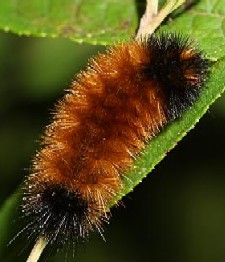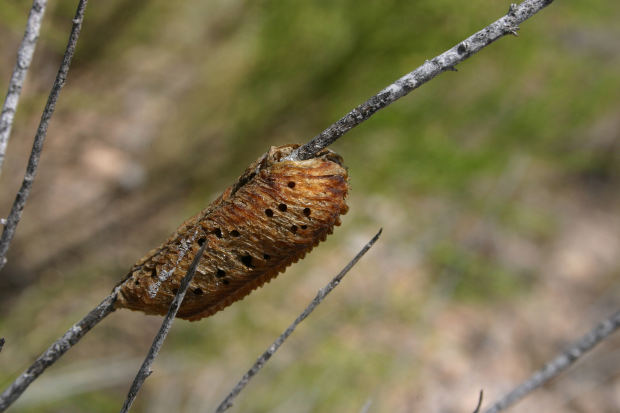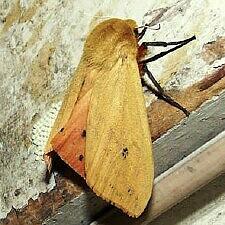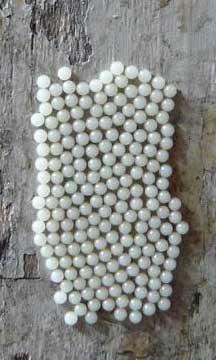Life Cycle & Reproduction
Pyrrharctia isabella is a sexually dimorphic organism that goes through a two stage life cycle which often encompasses two generations each year (depending on the climate) (Bugguide 2013). Eggs hatch at certain points throughout the year, and the life cycle is highly dependent on climate. In warm climates, the larva (banded woolly bear caterpillar) will typically feed for a couple weeks before pupating. In cold climates, however, the woolly bear will overwinter (live throughout the winter) by literally freezing solid (Encyclopedia of Life 2013).
In habitats with short summers, Pyrrharctia isabella will remain in the larva stage for a couple of years before pupating. If it lives in a moderate climate, it will likely go from larva stage to its adult stage in a single year.
Life Cycle
The caterpillar pupates twice (sometimes three times) each year: once during the spring and once during the summer. After coming out of its winter hibernation, it feeds for a few days or a couple of weeks, pupates, and then hatches as a tiger moth in the summer (June-July). The tiger moth lives for only a few days during which it mates, lays eggs, and dies. The male moths use pheromones during courtship in order to attract a mate, and often the females will respond by making "clicking" sounds and fluttering their wings (Krasnoff 2008). After mating and laying eggs the life cycle starts over.
Learn about some interesting Facts.
Return to Home.




